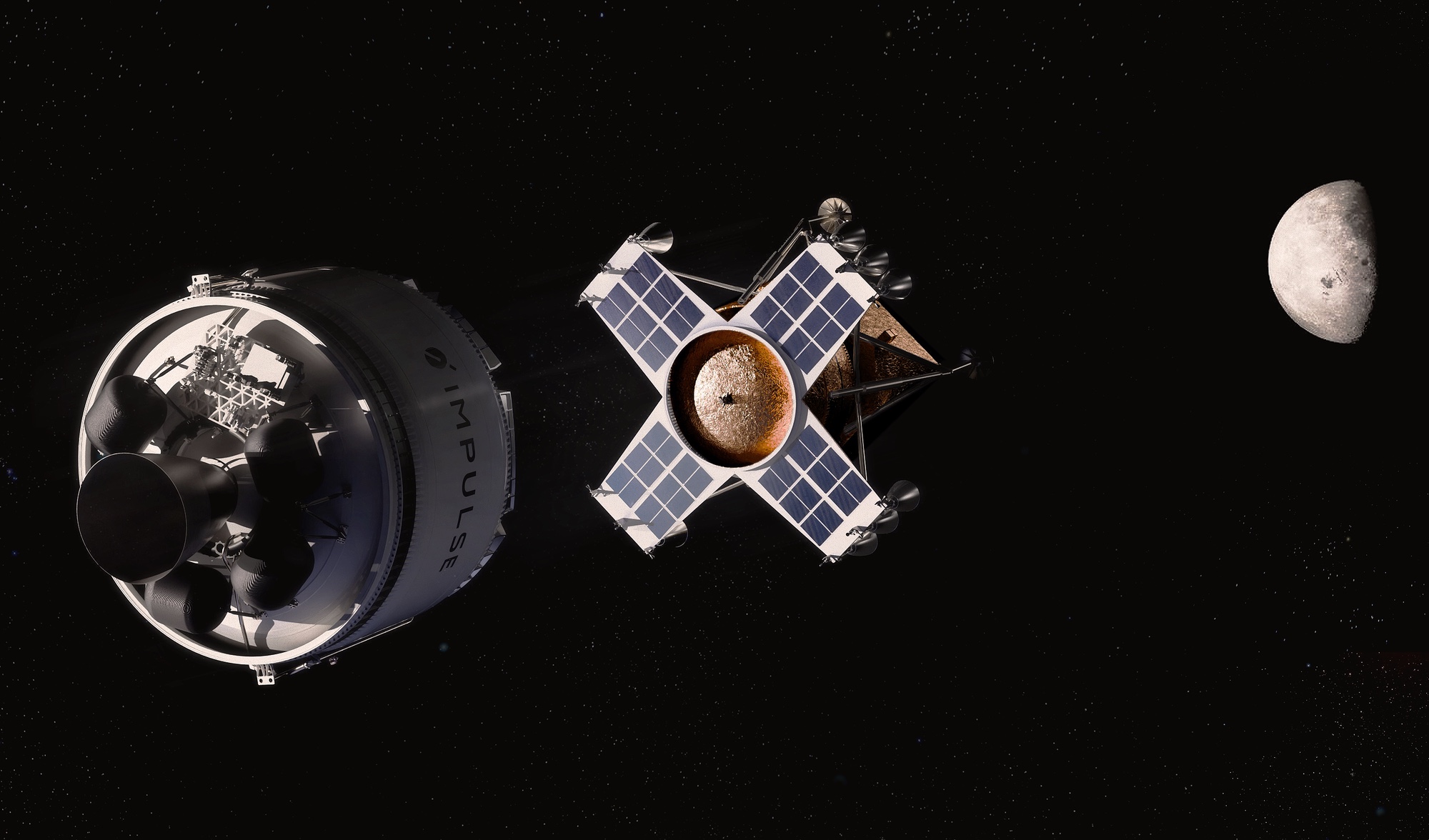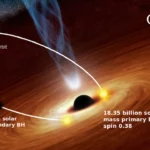Now Reading: Impulse Space announces lunar lander plans
-
01
Impulse Space announces lunar lander plans
Impulse Space announces lunar lander plans


WASHINGTON — In-space transportation company Impulse Space says it plans to develop a lunar lander to fill what it sees as a gap in missions to the moon.
The company announced Oct. 14 that it is developing a lunar cargo delivery system capable of transporting three metric tons of cargo to the lunar surface starting in 2028.
The concept combines the company’s Helios transfer vehicle with a new lander Impulse will design. Helios would transport the lander from low Earth orbit to low lunar orbit in about a week, after which the lander would descend to the lunar surface.
“Today, there’s a critical gap in lunar cargo delivery capabilities for payloads in a midsized (0.5-13 tons) range,” Tom Mueller, Impulse Space’s founder and chief executive, said in a statement. Landers developed by companies in NASA’s Commercial Lunar Payload Services program can deliver up to half a ton to the moon, while SpaceX’s Starship and Blue Origin’s Blue Moon Mark 2 lander, being developed for NASA’s Human Landing System program, can carry much larger payloads.
Landers in that middle range, he said, could support development of lunar infrastructure such as habitation modules and power systems. “We need landers capable of near-term, multi-ton cargo deliveries in order to rapidly build out a sustainable lunar presence.”
Mueller said Impulse’s approach relies on flight-proven systems, starting with existing launch vehicles that can place Helios and the lander into low Earth orbit. The first Helios mission is planned for late 2026, and by the time the lander is ready in 2028, the company expects to be flying “multiple” Helios missions a year.
The lander will use components and subsystems developed for other Impulse spacecraft, including an engine that uses technology similar to the Saiph thrusters on its Mira spacecraft. Both systems use the same storable propellants: nitrous oxide and ethane.
Impulse did not disclose the cost of developing the lander or the price it will charge for missions, but said it plans to offer a “cost-effective price point” and expects to fly two missions a year.
The lunar transportation niche Impulse hopes to occupy is not without competition. Blue Origin’s Blue Moon Mark 1 lander, set to make its first flight as soon as the end of this year, is capable of placing up to three metric tons on the lunar surface launching on a New Glenn rocket. NASA announced last month that it selected the lander to carry its VIPER rover to the moon on the vehicle’s second mission, expected in 2027.
This is also not the first time Impulse Space has proposed developing a lander. In 2022, the company announced plans to work with Relativity Space on a Mars lander, using Relativity’s Terran R rocket and a lander developed by Impulse. At the time, the companies said the first mission could launch as soon as 2024, but Terran R has yet to make its debut flight, and there have been no recent updates on the Mars lander project.
Mueller said the lunar lander is part of a broader roadmap to expand the company’s in-space mobility services beyond Earth orbit. “I’ve spent much of my career working to solve access to space; now, Impulse is solving mobility in space,” he said. “So far, Impulse’s mission has unfolded in the orbits closest to Earth. But our work to improve in-space mobility doesn’t end at geostationary orbit.”
Stay Informed With the Latest & Most Important News
-
 01From Polymerization-Enabled Folding and Assembly to Chemical Evolution: Key Processes for Emergence of Functional Polymers in the Origin of Life
01From Polymerization-Enabled Folding and Assembly to Chemical Evolution: Key Processes for Emergence of Functional Polymers in the Origin of Life -
 02Panasonic Leica Summilux DG 15mm f/1.7 ASPH review
02Panasonic Leica Summilux DG 15mm f/1.7 ASPH review -
 03How New NASA, India Earth Satellite NISAR Will See Earth
03How New NASA, India Earth Satellite NISAR Will See Earth -
 04And Thus Begins A New Year For Life On Earth
04And Thus Begins A New Year For Life On Earth -
 05Astronomy Activation Ambassadors: A New Era
05Astronomy Activation Ambassadors: A New Era -
06SpaceX launch surge helps set new global launch record in 2024
-
 07Two Black Holes Observed Circling Each Other for the First Time
07Two Black Holes Observed Circling Each Other for the First Time

















